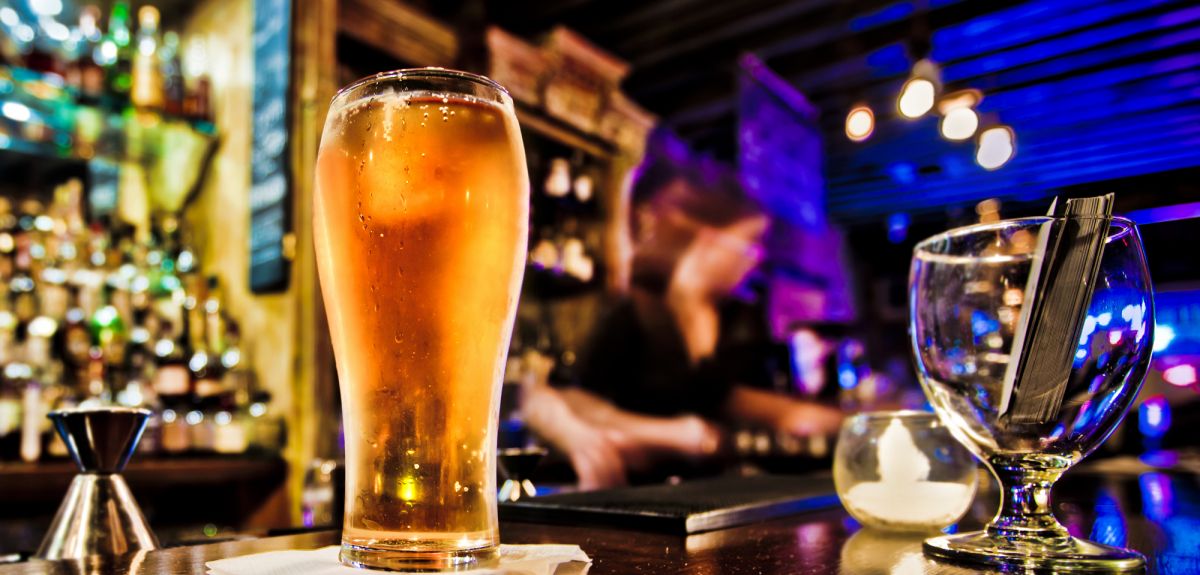
Credit: Stuart Monk. This image comes from Shutterstock.
Concerns raised about variable performance of some UK personal use breathalysers
Some breathalysers on sale to the UK public vary considerably in their ability to detect potentially unsafe levels of breath alcohol for driving, Oxford University researchers have found.
The findings call into question the regulatory process for approving these sorts of devices for personal use, say the researchers, particularly as false reassurance about a person's safety to drive could have potentially catastrophic consequences.
The Oxford University researchers compared the diagnostic accuracy, or sensitivity, of three personal use breathalysers to detect alcohol levels at or over the UK legal limit.
These devices are widely available in leading pharmacies and other major retailers, as well as online.
Lead researcher Dr Helen Ashdown of Oxford University's Department of Primary Care Health Sciences says: 'Our research suggests that at least some personal breathalysers available for sale to the public are not always sufficiently sensitive to test safety to drive after drinking alcohol, where use of inaccurate information from breathalysers, thought to be accurate, could have catastrophic safety implications for drivers.'
She adds: 'The safer thing is to choose non-alcoholic alternatives and never drink and drive.'
The study, published in the online journal BMJ Open, included 208 adults who were drinking in college bars and pubs in the centre of Oxford in late 2012 and early 2013.
Dr Susannah Fleming says: 'We identified three breathalysers available for sale in high street shops in the UK, and compared them to a police standard breathalyser, to test how accurate they were at detecting being over the legal driving limit, on the evening of drinking alcohol. As we wanted to test them on real subjects, we went to college bars and pubs around Oxford to find people who had been drinking alcohol. Participants were then asked to blow into three breathalysers in a randomised order, one of which was the police breathalyser, and we then compared the results.'
At least 20 minutes after drinking, participants were asked to test the single use Alcosense Single product or the comparable Dräger Alco-check, as well as the digital multi-use Alcosense Elite device, one minute apart, in a random order.
The participants, whose average age was 20, estimated that they had drunk an average of 6 units of alcohol that evening, ranging from 1 to 25 units.
The readings from the three devices were compared with those obtained from a Dräger Alcotest 6510 device, which is used by the police to check drivers' legal alcohol limits at the roadside.
The legal limit for driving in the UK is 35 µg/100 ml of breath alcohol, and almost one in five of those tested were at or over this limit, when the police breathalyser was used.
Compared with the police breathalyser, the digital Alcosense Elite had a sensitivity of around 90%, while the Dräger AlcoCheck had a sensitivity of just under 95%, in the main analysis.
However, even a sensitivity of 95% means that around 1 in 20 people over the legal driving limit for alcohol would be falsely reassured, say the researchers.
The Alcosense Single had an even lower sensitivity of 26%, compared with the police breathalyser. This means that the device would pick up only around 1 in 4 people over the legal limit, shortly after drinking.
The researchers acknowledge that the study has limitations. For example, the manufacturers of the Alcosense Elite stipulate that it should be used 30 minutes after drinking, when it was used 20 minutes afterwards in this study, so this may have affected the results for this breathalyser.
And the profile of the drinkers in the study may not be typical of those who are likely to buy breathalysers for personal use, the scientists add. Similarly, the researchers didn’t test the accuracy of the devices when used the day after drinking.
However, the researchers point out that regulatory approval, signified by the CE or NF markings, doesn't appear to have anything to do with accuracy, raising wider questions about how these markings may be perceived by consumers.
Dr Richard Stevens says: 'Our research raises questions about the level of scrutiny that medical tests intended for sale to the public undergo in Europe, and raises wider concerns about how diagnostic accuracy, in particular, is evaluated.'
One of the breathalyser manufacturers in response has criticised the methodology and results of the study.
Hunter Abbott, the managing director of AlcoSense said the test methodology would 'inherently produce inconsistent, unreliable and misleading results from all breathalysers tested, including the Draeger 6510 Police Reference product'.
Mr Abbott added: 'The instructions and guidelines of both AlcoSense products used were also not followed by the researchers causing further inaccuracies. Furthermore, the AlcoSense Elite consumer breathalyser was used far outside its design specification for occasional use, performing mass testing without allowing time for sensor recovery and condensation to clear from the device.'
He concluded: 'AlcoSense Singles devices have passed the toughest accuracy tests worldwide including US, Australian and French (there is no UK standard) and have been used for many years by the French Police as standard issue for road-side screening.'
The researchers' methodology is fully described in the peer-reviewed paper freely available in the open access BMJ Open journal.
Mr Abbott said his detailed response will become available at http://alcosense.co.uk/bmj.html.
 New study finds that ChatGPT amplifies global inequalities
New study finds that ChatGPT amplifies global inequalities
 Expert Comment: Chatbot-driven sexual abuse? The Grok case is just the tip of the iceberg
Expert Comment: Chatbot-driven sexual abuse? The Grok case is just the tip of the iceberg